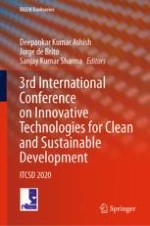2021 | OriginalPaper | Chapter
Physical and Microstructural Properties of Construction and Demolition Waste Based Masonry Units
Authors : Vivian Lawrence Sequeira, Ashwin M. Joshi, Meghashree D. Kerekoppa, Namratha Bharadwaj
Published in: 3rd International Conference on Innovative Technologies for Clean and Sustainable Development
Publisher: Springer International Publishing
Activate our intelligent search to find suitable subject content or patents.
Select sections of text to find matching patents with Artificial Intelligence. powered by
Select sections of text to find additional relevant content using AI-assisted search. powered by
